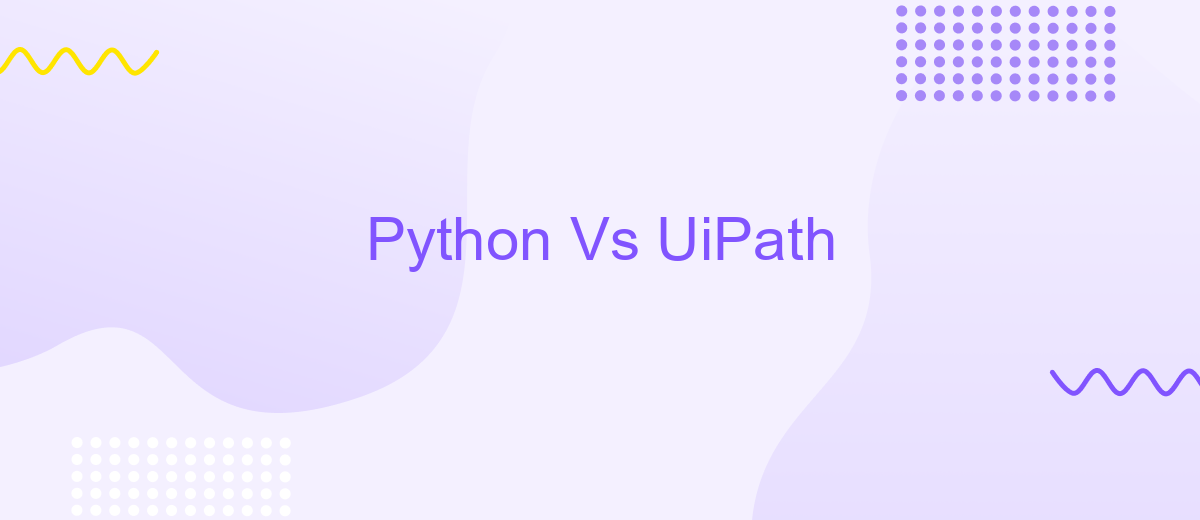Python Vs UiPath
In the rapidly evolving world of automation, both Python and UiPath have emerged as powerful tools. Python, a versatile programming language, offers extensive libraries and frameworks for automation. On the other hand, UiPath provides a user-friendly platform specifically designed for robotic process automation (RPA). This article explores the strengths and weaknesses of each, helping you decide which tool best suits your automation needs.
Introduction: An Overview of Python and UiPath
Python and UiPath are two powerful tools widely used in the realm of automation and programming. Python, a high-level programming language, is renowned for its simplicity, readability, and versatility. It is extensively used for web development, data analysis, artificial intelligence, and more. On the other hand, UiPath is a leading Robotic Process Automation (RPA) platform designed to automate repetitive tasks, allowing businesses to streamline their operations and improve efficiency.
- Python is an open-source language with a vast community and numerous libraries.
- UiPath offers user-friendly drag-and-drop features, making it accessible for non-programmers.
- Python excels in complex scripting and data manipulation tasks.
- UiPath is ideal for automating business processes and integrating various applications.
While Python provides extensive capabilities for developers to create custom scripts and applications, UiPath simplifies the automation of routine tasks without requiring deep programming knowledge. Services like ApiX-Drive can further enhance the integration capabilities of both Python and UiPath, enabling seamless data transfer and workflow automation between different platforms. By leveraging the strengths of both tools, organizations can achieve a high level of efficiency and productivity.
Features and Functionality Comparison: A Deep Dive

Python and UiPath offer distinct features and functionalities tailored to different automation needs. Python, as a versatile programming language, provides extensive libraries and frameworks for data analysis, web development, and machine learning. It enables developers to write custom scripts and integrate with various APIs effortlessly. UiPath, on the other hand, is a dedicated Robotic Process Automation (RPA) tool that excels in automating repetitive tasks through a visual interface, requiring minimal coding knowledge. Its drag-and-drop functionality and pre-built activities simplify the automation of complex workflows.
When it comes to integration capabilities, Python's flexibility allows seamless connection with numerous third-party services and platforms. Utilizing tools like ApiX-Drive, Python can automate data transfers and synchronize applications efficiently. UiPath also supports extensive integrations but often relies on built-in connectors and activities for popular services. While Python offers more control and customization, UiPath provides a user-friendly approach to automation, making it accessible to non-developers. Ultimately, the choice between Python and UiPath depends on the specific requirements and technical expertise of the user.
Application Areas and Use Cases: Identifying Suitability

When determining the suitability of Python versus UiPath, it's essential to consider their application areas and use cases. Python, a versatile programming language, excels in a variety of domains including web development, data analysis, machine learning, and automation. UiPath, on the other hand, is a robust robotic process automation (RPA) tool designed specifically for automating repetitive tasks in business processes.
- Python: Ideal for custom software development, data science projects, web scraping, and integrating various APIs. Its extensive libraries and frameworks make it a go-to for developers looking to build scalable and complex applications.
- UiPath: Best suited for automating rule-based processes such as data entry, invoice processing, and customer service workflows. UiPath’s drag-and-drop interface and pre-built activities enable non-developers to create automation scripts efficiently.
For businesses looking to integrate multiple services seamlessly, tools like ApiX-Drive can be a valuable addition. ApiX-Drive helps in setting up integrations between different platforms without the need for extensive coding, making it an excellent complement to both Python and UiPath in achieving streamlined automation and data flow.
Pricing and Support Models: Evaluating Cost-Effectiveness

When evaluating the cost-effectiveness of Python and UiPath, it is essential to consider both pricing models and support structures. Python, being an open-source language, is free to use, which significantly reduces initial costs. However, costs may arise from hiring developers and investing in necessary infrastructure. In contrast, UiPath offers a tiered pricing model, including a free community edition and various enterprise plans, which can be more predictable but potentially expensive for large-scale operations.
Support models also vary significantly between Python and UiPath. Python relies heavily on community support, extensive documentation, and third-party forums, which can be a double-edged sword. While there is a wealth of information available, it may not always be timely or specific to your needs. UiPath, on the other hand, provides dedicated customer support, training resources, and a comprehensive knowledge base, ensuring more structured assistance.
- Python: Free to use, but potential costs for developers and infrastructure.
- UiPath: Tiered pricing model with free and enterprise options.
- Python: Community-driven support and extensive documentation.
- UiPath: Dedicated customer support and training resources.
In summary, the choice between Python and UiPath will depend on your specific needs and budget. Python offers flexibility and lower initial costs, while UiPath provides structured support and predictable pricing. For businesses requiring seamless integrations, services like ApiX-Drive can further enhance the capabilities of both platforms, making the decision more nuanced.
Advantages, Limitations, and Conclusion: Making an Informed Choice
Python offers unparalleled flexibility and a vast array of libraries, making it ideal for complex automation tasks and data analysis. Its open-source nature ensures continuous community support and updates. UiPath, on the other hand, excels in user-friendly interfaces and rapid deployment of automation processes, even for those with minimal coding experience. It provides robust integration capabilities with various applications, including seamless integration through services like ApiX-Drive, which simplifies connecting different software systems.
However, Python's steep learning curve and the need for extensive coding knowledge can be a limitation for non-developers. UiPath, while easier to use, may lack the deep customization options that Python offers. Additionally, UiPath's licensing costs can be a barrier for small businesses. In conclusion, the choice between Python and UiPath depends on the specific needs of the project: Python for highly customizable and complex tasks, and UiPath for quick, efficient automation with minimal coding. Evaluating the scope and requirements of your automation goals will guide you in making an informed decision.
- Automate the work of an online store or landing
- Empower through integration
- Don't spend money on programmers and integrators
- Save time by automating routine tasks
FAQ
What is the main difference between Python and UiPath?
Which one is easier to learn for beginners?
Can Python and UiPath be used together?
Which one is more suitable for large-scale enterprise automation?
Do I need programming skills to use UiPath?
Apix-Drive is a universal tool that will quickly streamline any workflow, freeing you from routine and possible financial losses. Try ApiX-Drive in action and see how useful it is for you personally. In the meantime, when you are setting up connections between systems, think about where you are investing your free time, because now you will have much more of it.


